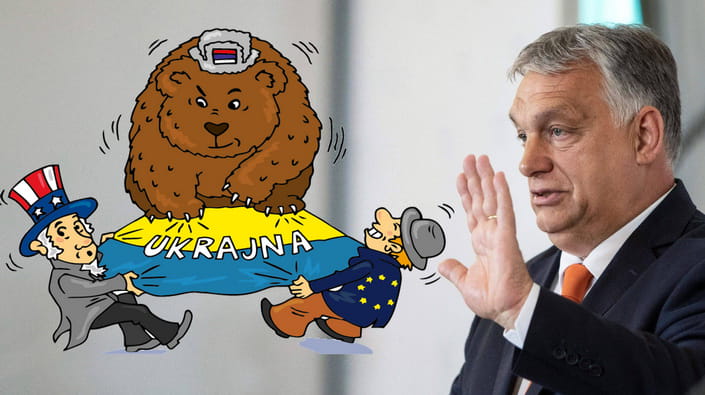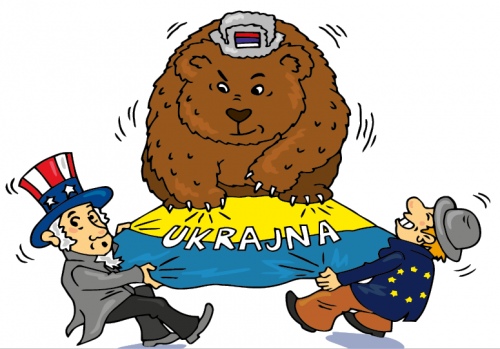Orbán's School Propaganda: Hungary Raising Generation Hostile to Ukraine

In Hungary, an EU and NATO member state, only 3% of the voters of the current ruling party believe that Russia is responsible for the war in Ukraine. The rest blame mainly the USA and Ukraine itself. The data is confirmed by surveys.
Interestingly, the situation is the opposite among government critics: 64% of opposition coalition supporters blame Russia for the war.
Why is the difference so dramatic?
Viktor Orbán, who has been the country's leader for more than 12 consecutive years, controls not only all branches of government but also the main media in Hungary. The European Parliament has repeatedly confirmed that Hungary's freedom of speech and media independence is threatened. But Orbán does not give up his influence because it lets the Hungarian government create an "alternative reality" for its supporters.
Meanwhile, there are still several loyal media to the opposition, independent websites, and even a TV channel. Only voters who dislike Orbán watch it, but they are a vast minority in a propaganda-soaked country.
As a result, supporters of the government and the opposition live in different worlds.
This is important to know to understand the significance of the case discussed in this article.
It seems that the Hungarian government machine has also launched a new level of propaganda - among children.
Hungarian educators have been talking about this since at least 2020, when new textbooks showed the first anti-migrant signs. International media had noticed such propaganda signs in textbooks even before that.
Nowadays, the educational programme also hits Ukraine, which has become a new object of nationwide hatred thanks to Orbán's team.
"Dear children, to whom should Ukraine belong?"
The other day, the Hungarian independent Internet medium Telex highlighted the geography textbook for the 8th grade. It was written by the state-run organisation OFI and is mandatory for Hungarian pupils.
The chapter on Ukraine presents an "alternative reality."
There are only a few geographical facts in it, with mistakes. For example, Hungarian authors do not know that the mountains in occupied Crimea are part of Ukraine. Instead, the book claims that the Carpathians are the only ones in Ukraine, "at the foot of which are located the historical Hungarian cities: Ungvár (Uzhhorod), Munkacs (Mukacheve), Hust."
The cities listed as "Hungarian" are actually Ukrainian.
The part on contemporary history (for some reason included in the geography textbook!) is especially interesting.
"In multi-ethnic Ukraine, the majority are Ukrainians, but a significant share of Russians live in the East of the country. On the Crimean peninsula, they are the majority. Russian and Ukrainian languages are very similar. A fifth of the population speaks a mixed Russian-Ukrainian language. Despite this, the two ethnic groups often come into conflict with one another. It also provoked an armed conflict in the Crimean peninsula, see the picture," claim the Hungarian "geographers."
The textbook promotes a fake narrative among Hungarian pupils as if there is a civil war in Ukraine.
The thesis that the conflict is related to the languages has nothing to do with reality. Most importantly, they do not mention Russia even a single time. As if there was no annexation of Crimea, aggression in the East, and now a full-scale invasion of Ukraine.
However, it is not the most shocking part.
The denial of the Russian attack, which is offensive to Ukrainians, is accompanied by such a picture - Ukraine is being torn apart by a Russian bear and men with the US and EU symbols.
The picture is accompanied by a caption-question "Who (of them) should Ukraine belong to?"
"Péter Szijjártó (the Minister of Foreign Affairs of Hungary) should hand over one of the medals he received in Moscow to those who wrote this chapter. Who, if not these people, deserved it," the Telex author, who was the first to notice this page, joked in his article.
Programming contempt
Simply ignoring Russian aggression is not enough for propaganda since children still hear about the war between Russia and Ukraine in the news. Therefore, the textbook authors tried to convince: that this war is not real.
For real, what kind of armed conflict can it be about if "Ukraine purchases Russian hydrocarbons for a more favorable price (than other buyers in Europe)"? This textbook statement is 100% wrong. Since the Russian aggression in 2014, Ukraine has not bought oil and gas from Russia and later stopped buying petroleum products.
In addition, they make efforts to prove to children that Ukraine is not at war but actively trades with the aggressor state. They provide a diagram according to which Russia is the largest trading partner of Ukraine, with 24% of the total volume of trade.
This is so not true. For example, in 2021, Ukrainian export to Russia amounted to only 5%. And to deceive students, the textbook authors used data from 2013 - the last year before the Russian aggression. Although even then, the main trade partner was the European Union, which is a single customs area. Instead, the Hungarian authors divided it by country and scattered it in different parts of the diagram.
The textbook also explains to Hungarian children that Ukraine is a bad place to live. And the Hungarians who ended up in Ukraine suffer the most.
"The general economic situation in Ukraine is not favorable for Hungarians, besides Transcarpathia is one of the most backward regions," the textbook explains.
There is a way out!
Young Hungarians can find it, solving a practical task that sums up the chapter on Ukraine. It tells the children that it makes more sense for Transcarpathia, a region where the Hungarian minority lives compactly, to be under Budapest. "Check out on Google Maps how far a resident of Mukachevo from Transcarpathia needs to go to Kyiv and Budapest," the textbook authors recommend.
This textbook will end up in all Hungarian-language, even in Transcarpathia, where the Hungarian government sends its books.
The Ukrainian state should react to this educative treasure and demand Hungary to get rid of these textbooks.
And Transcarpathia generally needs more attention from Kyiv. It is necessary to work more with Hungarian-language schools, with the minority, etc.
Perhaps now, due to the hostilities in the East and South, this does not seem to be a priority. But the history told by just a few pages of only one Hungarian textbook show that it is no longer possible to ignore this issue.
Sergiy Sydorenko,
Editor of the European Pravda
